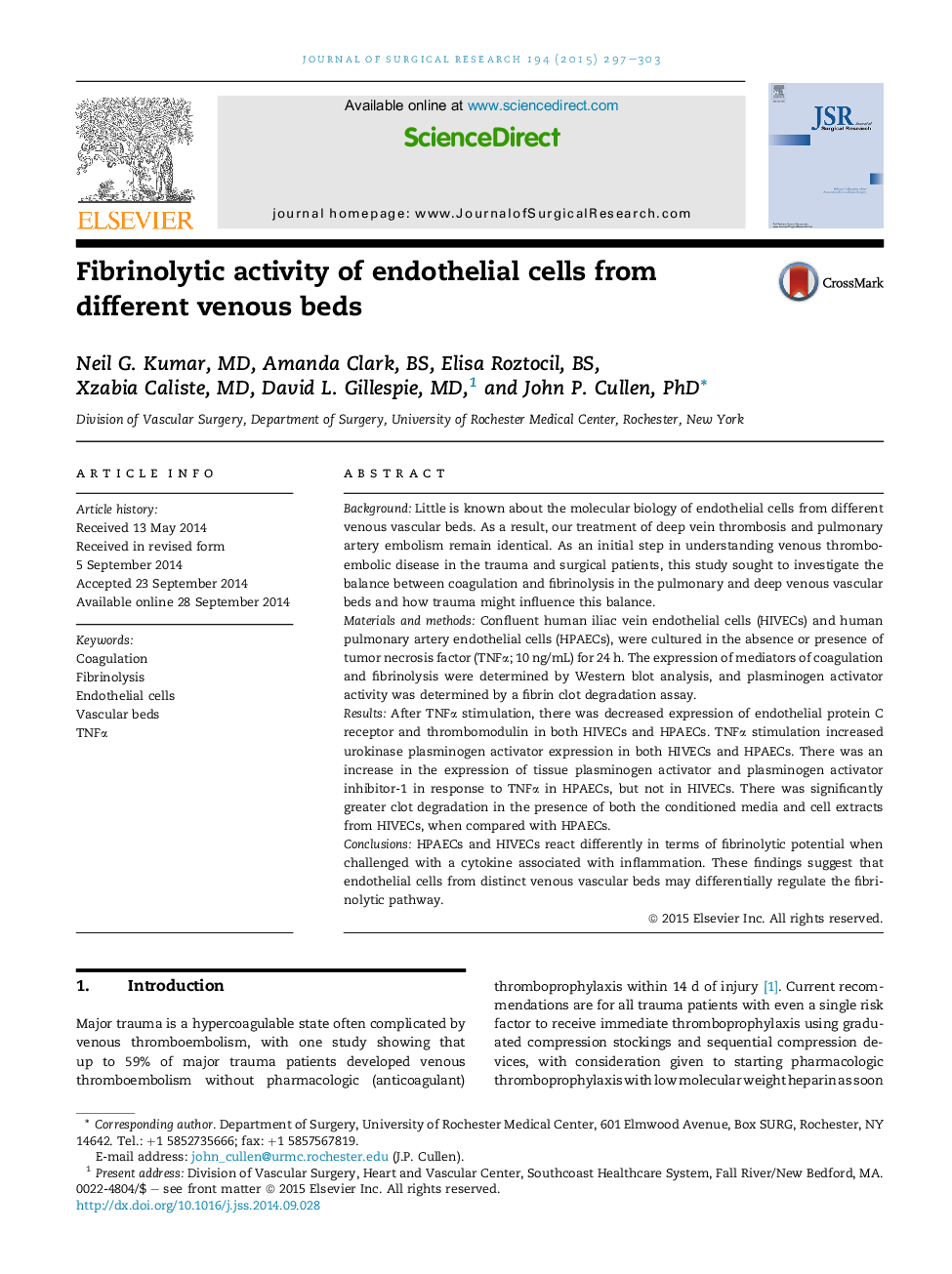| Article ID | Journal | Published Year | Pages | File Type |
|---|---|---|---|---|
| 4299856 | Journal of Surgical Research | 2015 | 7 Pages |
BackgroundLittle is known about the molecular biology of endothelial cells from different venous vascular beds. As a result, our treatment of deep vein thrombosis and pulmonary artery embolism remain identical. As an initial step in understanding venous thromboembolic disease in the trauma and surgical patients, this study sought to investigate the balance between coagulation and fibrinolysis in the pulmonary and deep venous vascular beds and how trauma might influence this balance.Materials and methodsConfluent human iliac vein endothelial cells (HIVECs) and human pulmonary artery endothelial cells (HPAECs), were cultured in the absence or presence of tumor necrosis factor (TNFα; 10 ng/mL) for 24 h. The expression of mediators of coagulation and fibrinolysis were determined by Western blot analysis, and plasminogen activator activity was determined by a fibrin clot degradation assay.ResultsAfter TNFα stimulation, there was decreased expression of endothelial protein C receptor and thrombomodulin in both HIVECs and HPAECs. TNFα stimulation increased urokinase plasminogen activator expression in both HIVECs and HPAECs. There was an increase in the expression of tissue plasminogen activator and plasminogen activator inhibitor-1 in response to TNFα in HPAECs, but not in HIVECs. There was significantly greater clot degradation in the presence of both the conditioned media and cell extracts from HIVECs, when compared with HPAECs.ConclusionsHPAECs and HIVECs react differently in terms of fibrinolytic potential when challenged with a cytokine associated with inflammation. These findings suggest that endothelial cells from distinct venous vascular beds may differentially regulate the fibrinolytic pathway.
